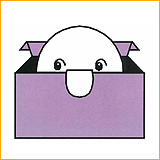| Mental Health Tips | |
| Common Mental Problems | |
| Substance Misuse | |
| Treatment of Mental Disorders | |
| Mental Health Education Pamphlets | |
 Autism
Autism
(Special thanks to Dr Quinney Chan of Institute of Mental Health, Castle Peak Hospital, for authoring this article)
Autism is a neurodevelopmental disorder – which means they are caused by abnormalities in the way the brain develops and works. They affect approximately 1 in 1000 children and it usually affects males more than females. Around 2/3 of autistic children have intellectual disability and about 10% of them may also have some special skills and abilities.
1. Characteristics of Autism
2. The causes of Autism
3. Treatment of Autism
4. Progress of autism
1. Characteristics of Autism
To establish the diagnosis of Autism, there should be evidence of unusual development in the following 3 domains before the age of 3:
- Communication
- Social interaction
- Restricted, repetitive and stereotyped pattern of behaviours
i. Difficulties with communication
- They have speech delay. Some children even fail to develop any speech or have very limited speech.
- They may have echolalia (parrot-like speech) and they may repeat a certain word or phrase
- They have difficulty using their speech socially or to sustain a conversation even for those who can develop normal speech
- Their language may be overly formal or 'adult-like'
- They may indulge in self talking or talk at length about their own topics of interest, but cannot understand the back and forth nature of two-way conversations
- They are lack of imaginative or imitative play
ii. Difficulties with social interaction
-
- In young children with Autism, they seldom have eye contact with others and seldom response to name calling
- They cannot understand others by eye contact, body gestures or facial expression and they cannot express themselves with these as well
- They lack the initiative to interact with other or to share with others their emotion, interests and activities
- They live in their own world and appear indifferent to the surrounding
- They fail to recognize and understand their own feelings and those of people around them
- They appear insensitive to others because they cannot understand social rules and expectations
All these difficulties make them difficult to make friends and they may prefer to be alone
iii. Restricted, repetitive and stereotyped patterns of behaviours, interests and activities
-
- They often prefer familiar routines (e.g. take the same route to a particular place, arrange things in a particular way)
- They have difficulties dealing with change and may have temper tantrum in response to change
- They may have unusually intense and specific interests, e.g. electronic gadgets, lists of dates, buses or train and their timetables
- They might play with toys mechanically e.g. lining up or arranging order
- They show more interest in part of an object e.g. wheel
- They may have unusual repetitive movements such as hand flapping or twisting, tip toeing, self spinning or other complicated whole body movements
Other characteristics
-
- Autistic patient may have unusual responses to sensory stimulation, that they may have over or under response to tastes, smells, sounds and textures e.g. they can be very sensitive to the sound of a hair dryer, or particularly like the feel of a certain texture against their skin
- They may have sudden temper outburst which manifest as self harm behaviours, or rarely as violent behaviours to others.
- Hyperactive and inattention symptoms are not uncommonly seen
2. The causes of Autism
Autism results from abnormalities in brain structure or function but the exact underlying cause has not been identified.
Research has shown the abnormality in brain may be caused by both genetic and environmental factors, which may include exposure to toxin, viral infection, metabolic disorders or complication during pregnancy and delivery.
3. Treatment of Autism
Currently there is no cure for autism, yet research shows that with appropriate treatment and education, many children with the disorder can learn and develop.
Early intervention often can reduce disruptive behaviour and provide some degree of independence.
Treatment depends on the individual needs of the patient. In most cases, a combination of treatment methods is more effective. Autism usually requires lifelong treatment.
Autism treatment may include the following:
-
- Occupational therapy
- Speech therapy
- Behavioural modification
- Play Therapy
- Medication
i. Occupational therapy
It helps to improve independent function and teaches basic skills (e.g. buttoning a shirt, bathing).
ii. Speech Therapy
Speech therapy helps patients to improve the ability to speak and to teach patients to communicate their needs and ideas via other means.
iii. Behavioural Modification
These are methods to reduce inappropriate, repetitive, and aggressive behaviour. These methods can also be employed to train autistic patients with skills necessary to function in their environment. Behavioural modification is based on the theory that rewarded behaviour is more likely to be repeated and punished behaviour is likely to be extinguished.
iv. Play therapy
It is used to improve emotional development and social skill by adult-child interaction during playing. It may also involve social stories which help to improve patients’ understanding on the feelings, ideas, and points of view of others.
v. Medication
Different types of medication can also be used to reduce emotional problems, temper tantrum or other disruptive behaviours.
4. Progress of autism
Most of the autistic patients require assistance in living when they grow up and only a minority of them can lead an independent life. They continue to experience similar difficulties throughout life, although generally they become less severe with training and treatment. Getting help as early as possible for children can make a real difference.
Websites with relevant information / Reference
|
================================================================================ Thank you for browsing the mental health tips on the IMH internet. We would like to hear feedback from you through the questionnaire below. Your comments are most welcome for our continuous improvement. |
No. of visitors of this page: 2892


